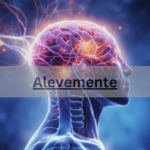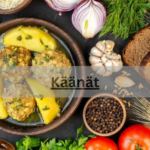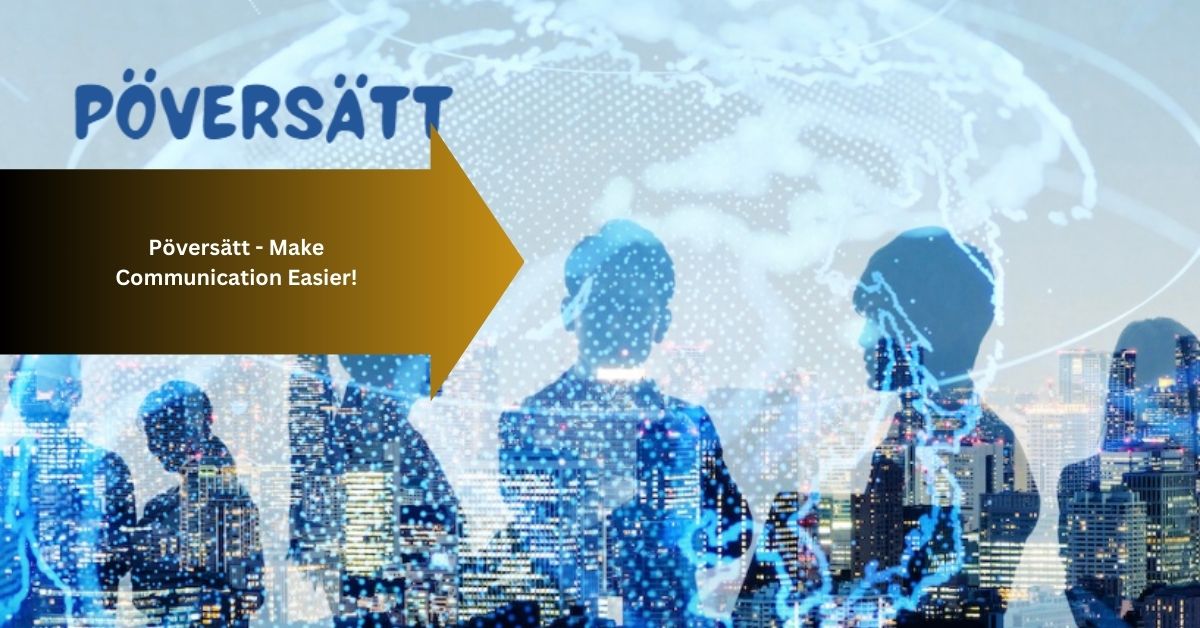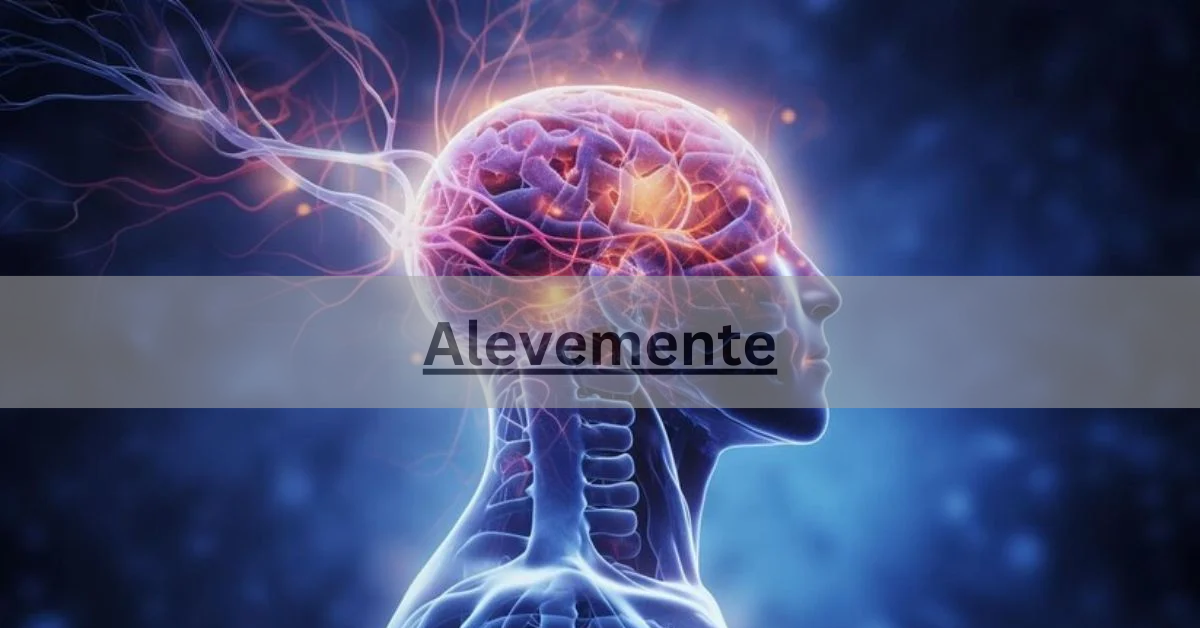As a translator, mastering “pöversätt” has been pivotal in my journey. It’s not just about words; it’s about conveying cultural nuances and preserving the essence of texts across languages, enriching global communication and understanding.
Pöversätt is the Swedish word for “translate” in English. It refers to the process of converting text or speech from one language into another while preserving the original meaning and intent.
Explore the magic of ‘pöversätt’ as it transforms words from one language into another, connecting people worldwide.
What is Pöversätt?
Pöversätt is a Swedish term that translates to “translate” in English. It encompasses the art and process of converting text or speech from one language to another while maintaining the original meaning and intent.
This practice is essential for facilitating communication and understanding across linguistic boundaries. Through translation, cultural works such as literature, films, and scientific research can reach a global audience, fostering cross-cultural exchange and collaboration.
It requires skilled translators who understand both the source and target languages deeply, ensuring accuracy and cultural sensitivity in the translated material.
Ultimately, “pöversätt” serves as a bridge that connects people from different linguistic backgrounds, promoting inclusivity and mutual understanding in our interconnected world.
Why Translation Matters?
Translation is essential because it breaks down barriers between languages and cultures, enabling effective communication and mutual understanding. It allows ideas, literature, and information to be shared globally, enriching societies with diverse perspectives and knowledge.
In business and international relations, accurate translation ensures that agreements, contracts, and negotiations are clear and understood by all parties involved, facilitating smooth transactions and partnerships.
Education benefits immensely from translation, as it enables access to a vast array of academic resources and research from around the world, fostering innovation and collaboration among scholars and students.
Furthermore, translation plays a crucial role in preserving cultural heritage and languages, ensuring that traditions, stories, and historical documents are accessible and appreciated across generations.
Ultimately, translation serves as a bridge that connects people, promotes cultural exchange, and contributes to a more interconnected and inclusive global community.
Read: Awm99x – Upgrade Your Industry!
How Does Translation Work?
1. Understanding Source Text:
Translators begin by thoroughly comprehending the meaning, nuances, and cultural context of the source text in its original language. This involves dissecting the text to capture its essence and intended message.
2. Translating Words and Phrases:
They carefully select equivalent words and phrases in the target language that convey the same meaning and tone as the original, ensuring clarity and coherence in the translation process.
3. Preserving Intent and Style:
It’s essential to maintain the author’s original intent and style, whether it’s the poetic flow of literature or the precise terminology in technical documents. This means knowing both languages well and understanding the topic thoroughly.
4. Cultural Adaptation:
Translators adapt the text to ensure cultural relevance and sensitivity, taking into account idioms, references, and cultural norms that may differ between languages. This ensures that the translated text resonates with the target audience.
5. Editing and Proofreading:
After translating, the text undergoes editing and proofreading to ensure accuracy, consistency, and readability in the target language. This step is crucial for refining the translation and catching any errors or inconsistencies.
6. Use of Translation Tools:
Modern translators often use computer-assisted translation (CAT) tools and translation memory software to improve efficiency and maintain consistency across large projects. These tools help manage terminology and ensure uniformity in translations.
7. Feedback and Revision:
Feedback from editors, clients, or native speakers of the target language may prompt revisions to further refine the translation and ensure it meets the desired standards of clarity and accuracy. Iterative revision processes contribute to producing high-quality translations that effectively convey the original message.
What are the types of translation?
Translation encompasses various specialized fields tailored to different types of content and contexts. Here are the main types:
1. Literary Translation:
Focuses on translating literary works such as novels, poems, and plays. Translators must capture the style, tone, and cultural nuances of the original text to convey its artistic integrity.
2. Technical Translation:
Involves translating technical documents like manuals, user guides, and scientific papers. Precision and clarity are crucial to ensure accurate understanding and application of technical information.
3. Legal Translation:
Deals with translating legal documents such as contracts, agreements, and court proceedings. It requires expertise in legal terminology and adherence to jurisdiction-specific legal standards.
4. Medical Translation:
Concerns translating medical documents including patient records, research papers, and pharmaceutical information. Accuracy is paramount to ensure precise medical communication and patient care.
5. Financial Translation:
Involves translating financial documents such as annual reports, financial statements, and investment materials. Translators must understand financial terminology and principles to convey information accurately.
6. Localization:
Adapts content to suit the cultural and linguistic preferences of a specific target audience or market. It involves not only translation but also cultural adaptation of images, colors, and symbols.
7. Website and Software Localization:
Focuses on adapting websites, apps, and software interfaces for different languages and regions. It ensures user interfaces are intuitive and culturally relevant.
Read: Search On Faspeinfo – Explore a world of knowledge!
What challenges do translators face?
Translators encounter various challenges that require skill, precision, and cultural sensitivity to overcome:
- Linguistic Nuances:
Languages have special sayings, expressions, and subtleties that don’t always translate directly, which can make accurate translation difficult.
- Cultural Differences:
Translators must navigate cultural differences to ensure the translated text is culturally appropriate and resonates with the target audience.
- Maintaining Tone and Style:
Capturing the tone, style, and voice of the original text, especially in literary or creative works, requires a deep understanding of both languages.
- Technical and Specialized Content:
Translating technical documents or specialized content (legal, medical, scientific) demands precise knowledge of industry-specific terminology and concepts.
- Deadlines and Pressure:
Meeting tight deadlines while maintaining translation quality can be stressful, especially for large or urgent projects.
- Quality Assurance:
Ensuring consistency, accuracy, and clarity throughout the translation process, often through revision and proofreading, is essential but time-consuming.
- Technology Integration:
While beneficial, using translation tools and software requires translators to adapt and verify output for accuracy and context.
- Ethical Considerations:
Translators may face ethical dilemmas, such as handling sensitive information or ensuring unbiased translation in political or cultural contexts.
FAQ’s:
1. How can I become a translator?
Becoming a translator typically requires proficiency in at least two languages, formal education in translation or a related field, and practical experience. Developing cultural awareness and specialized knowledge in specific subject areas can also enhance translation skills.
2. What role does technology play in translation?
Technology, such as machine translation and computer-assisted translation tools, has significantly impacted the translation industry by improving efficiency and consistency. However, human translators remain essential for nuanced understanding and cultural adaptation.
3. Why is accurate translation important in business?
In business, accurate translation ensures clear communication in international dealings, including negotiations, contracts, and marketing materials. It helps businesses reach global markets and build relationships with partners and customers worldwide.
4. How does translation contribute to preserving languages and cultures?
Translation contributes to preserving languages by making cultural texts accessible to a wider audience. It helps maintain and celebrate linguistic diversity, ensuring that valuable cultural heritage is passed down through generations.
5. What are the future trends in translation?
The future of translation is likely to involve advancements in artificial intelligence (AI), real-time translation technologies, and the integration of language services into various digital platforms to meet the growing demand for multilingual communication.
Conclusion:
Pöversätt, Swedish for ‘translate,’ preserves original meaning across languages. Vital for global communication, cultural exchange, and business, it ensures accurate transmission of ideas and literature.










